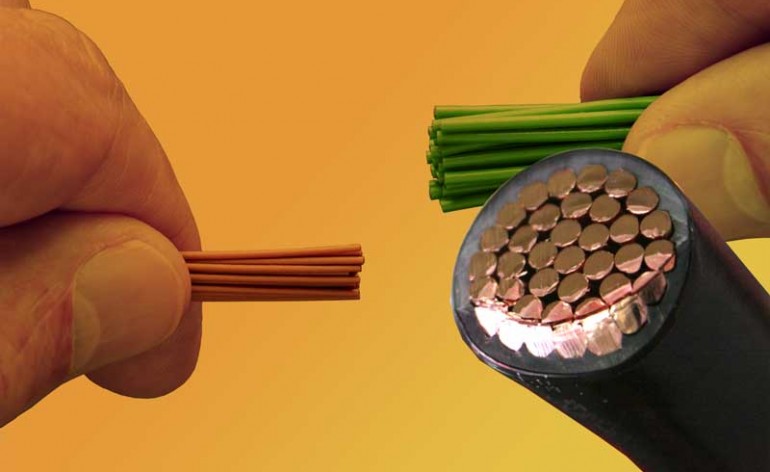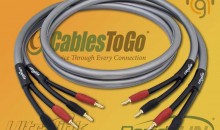What is Speaker Cable Gauge?
A lot of friends as me the question What is speaker cable gauge? Speaker cable gauge isn’t terribly difficult to understand, so this won’t be a very long article. When you talk about speaker cable gauge, what you mean is the size of the wire used to transmit the electrical energy that represents the sound waves traveling through the wire from the amplifier to the loudspeaker. The gauge of a wire determines just how much current it can carry. With speaker wire, however, the cables are really all about resistance, capacitance, and inductance. Those metrics will determine whether or not a speaker cable can handle the power and frequency response requirements over the length of the cable.
The perfect cable would have zero resistance, zero capacitance and zero inductance. Speaker cable gauge is a characteristic that affects the first two metrics directly, so it’s an important factor in choosing your wire or cables—in fact, it’s probably the most important.
Resistance and Speaker Cable Gauge
What is speaker cable gauge responsible for? Resistance, for one. Any time you send electricity through a wire you get resistance. The more resistance you get, the more the wire itself absorbs energy and converts it into heat. You don’t want that in any wire—unless it’s the filament in a light bulb! With that said, you are always looking to make sure that the speaker cable gauge offers a low enough resistance so that it transmits the electrical energy from the amplifier to the speaker without offering too much resistance and thus robbing the speaker of its energy. Resistance isn’t an island, either. It interacts with inductance and affects the frequency response.
If we talk about copper wire there are some guidelines as to the maximum length that’s recommended when running the wire from an amplifier to a speaker of a particular impedance (load). It’s not that you can’t exceed these recommendations, but when you do, you are going to roll off the top frequencies from the audible range (20 kHz)
If you look at this chart, you can see that, with an 8-ohm speaker, you’d want to run at least 16 AWG speaker wire if you’re running speakers 48 feet away (For example, to a back yard or a second zone of a home.) 48 feet may seem like a lot, but if you’re running up a 10-foot wall, across an attic, and down another wall, that distance may get taken up very quickly.
Thicker wires have lower resistance, so the lower the gauge (lower numbers equate to thicker wire), the less frequency roll-off you can expect. Since resistance is by far the most significant metric which affects all others, this is a great place to start when understanding what gauge wire you need for your application. Still, there are some other metrics.
Capacitance and Speaker Cable Gauge
You also can’t answer the question What is speaker cable gauge without addressing this thing called capacitance. Capacitance is always going to be an issue in speaker wires because they are essentially two parallel cables running next to each other—the very petri dish for capacitance. Over a cable’s run, the capacitance of the cable also factors into the attenuation of high-frequency response. The real issue with capacitance is that fancier cables, particularly those that are extra thick (lower gauge) have more of it. That means that while they sport less resistance, they can actually have significant frequency loss at the upper end. (Coincidentally, this often creates a “warmer” or “laid back” sound that’s often preferred—it’s, unfortunately, just not accurate.)
Inductance and Speaker Cable Gauge
All wire has inductance, which is a sort of resistance—a resistance to current fluctuations. That means that not only does the speaker have an inherent load (measured in ohms), the cable does as well. Some manufacturers employ fancy geometries in their cables (braids, etc) in order to minimize inductance. Speaker gauge interacts with inductance but isn’t a directly correlated metric.
Summing It Up
You can get all knotted up in wire gauge and these other metrics, but it’s important to note that some of the geekiest people in the world tend to compare the most expensive and fancy speaker cables against 12 gauge lamp cord (zip cord). That means that if you are dealing with basic speaker cables, then the question What is speaker cable gauge at least means you’re on the proper metric you should hang your hat on—all other things being unknown or assumed to be ordinary. That chart above is a great guideline for determining the gauge for your speaker runs. It’s also particularly important and helpful to know the load of your speakers (and even to anticipate an eventual upgrade). For example, if you know your amplifier/speaker load is 8-ohms and you’re doing a long run, it might not be a bad idea to get the speaker gauge you’d need for a 6-ohm or even a 4-ohm load. Spending an extra few dollars now is much preferred to having to pull all-new cable because your system is rolling off the high frequencies in a second zone. If you don’t want to do any math or read any charts, then purchasing 12-gauge speaker cables is going to be a good place to start. You can, however, save considerable money if you take a few minutes and check your work.
Have you had to calculate speaker cable gauge requirements in your home? How did you do it? Let us know by Liking us on Facebook and posting a comment on our wall.









Good article and useful chart. I see articles that caution against >50 feet runs, but yours seems more realistic. I have an 80 and 70 foot runs with 14 gauge copper to Sonance speakers with Sonos connect am. Really like it, no audio issues to my ear.